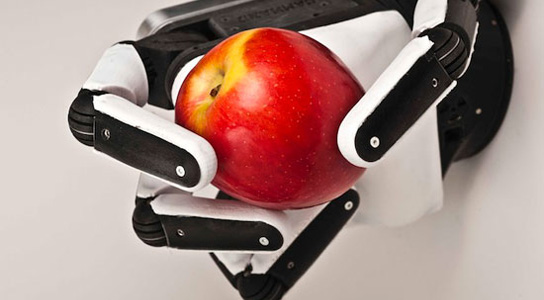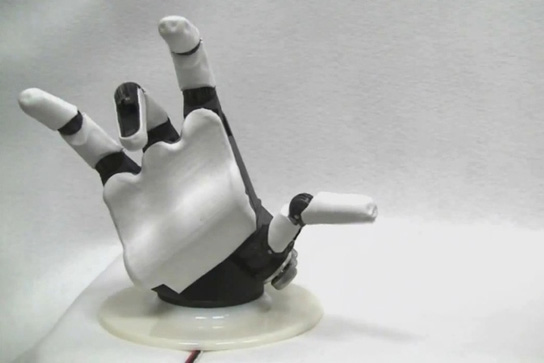Sandia’s Robot Hand Can Replace Battery in Flashlight
September 10, 2012

While the dream of fully autonomous cybernetic prosthetics might still be some time away, Sandia scientists have developed a robotic hand that has enough engineered dexterity to replace a battery in a small flashlight. It’s one of the intricacies of the human body and Sandia has approached the problem with a modular viewpoint.
Sandia National Laboratories‘ modular, plastic hand, whose electronics system is largely made from parts found in common smartphones, is able to perform at a high level of finesse for something robotic. It’s expected to cost about $10,000, a fraction of the $250,000 price tag a modern, state-of-the-art robot hand costs today.

The researchers saved on the cost by scouring the world for the least-expensive, highest-performing parts. The other way they saved money was by building the entire system from commodity parts, found in cell phones and designing the structures in plastic, after having been ensured that they would provide adequate strength.
Sandia Hand’s fingers are modular and affixed to the frame magnetically, allowing the researchers to design interchangeable appendages tipped with screwdrivers, flashlights, and other tools. The fingers also detach automatically when the hand hits a solid object too fast. The hand will even be able to retrieve a fallen finger.

The Hand currently has only four fingers, including an opposable thumb. Future iterations of the Hand could have any number of fingers and arrangements, without adding too much cost or complexity. The Hand might someday be programmed to function autonomously, but for now, it has to be remote-controlled using a sensor-laden glove or control panel. The glove is currently tethered via USB, but the team is working on a wireless version. The goal is for the glove to cost about $1,000.
DARPA is funding the project, and it might well become an addition to robots involved in disarming and disposing IEDs.
No comments:
Post a Comment